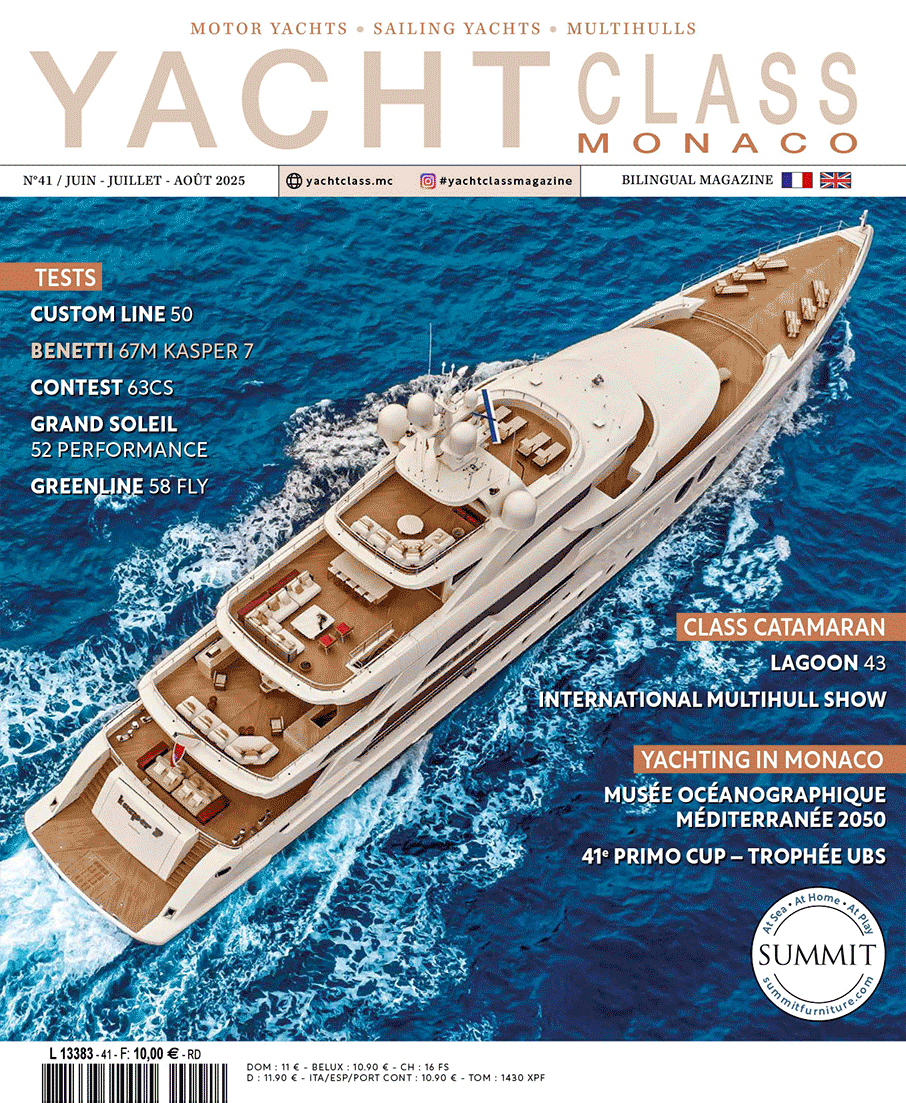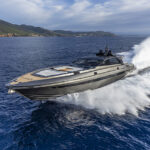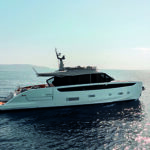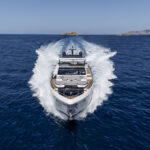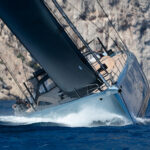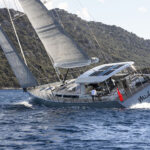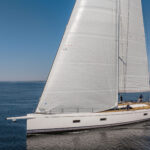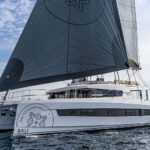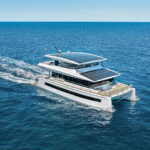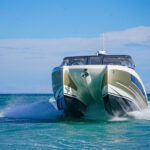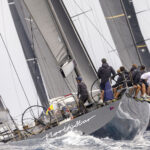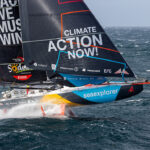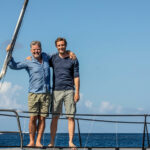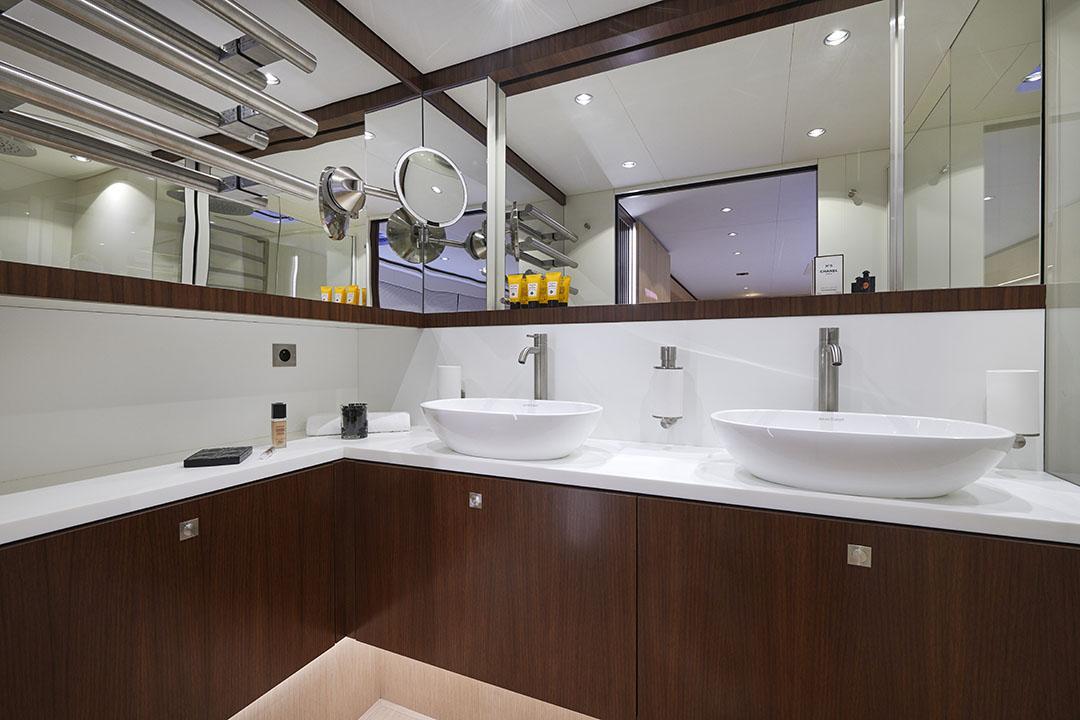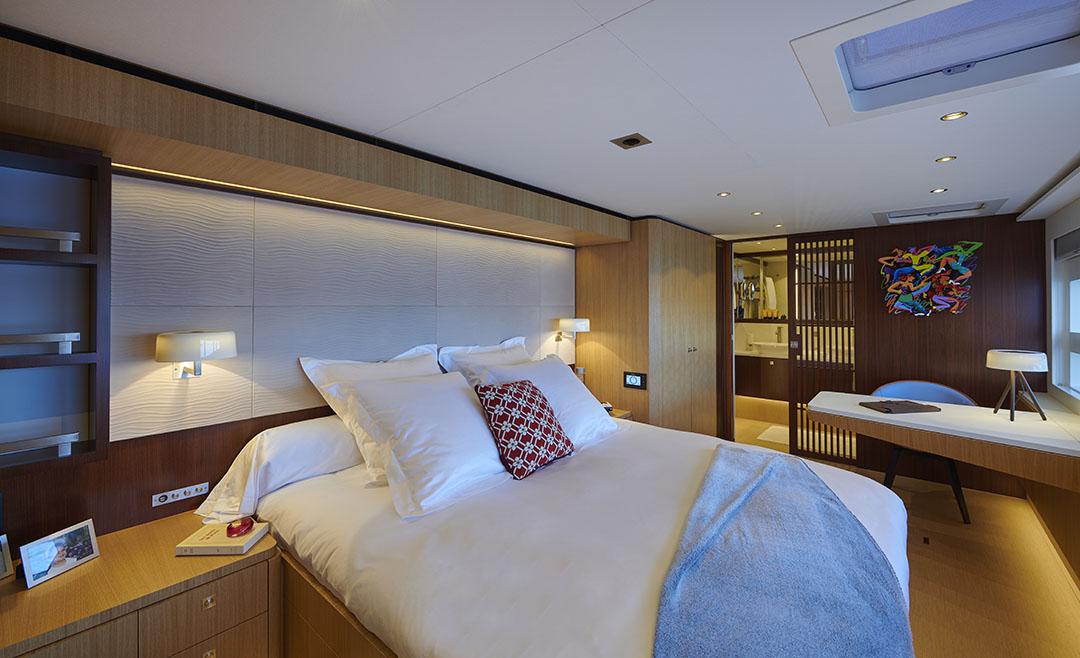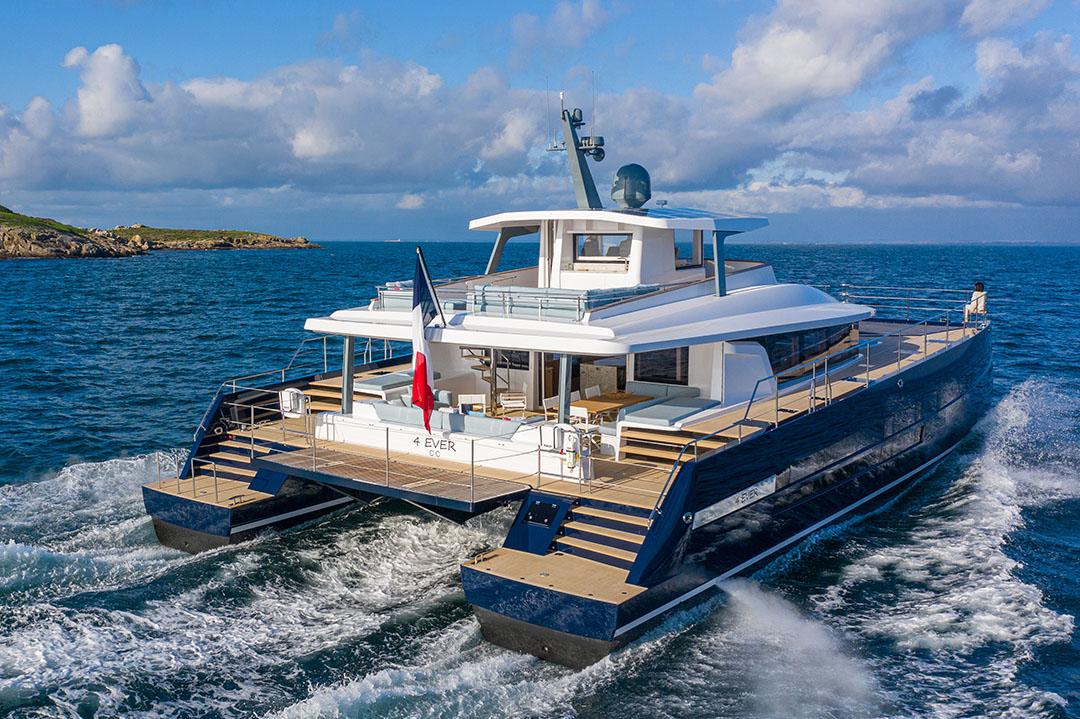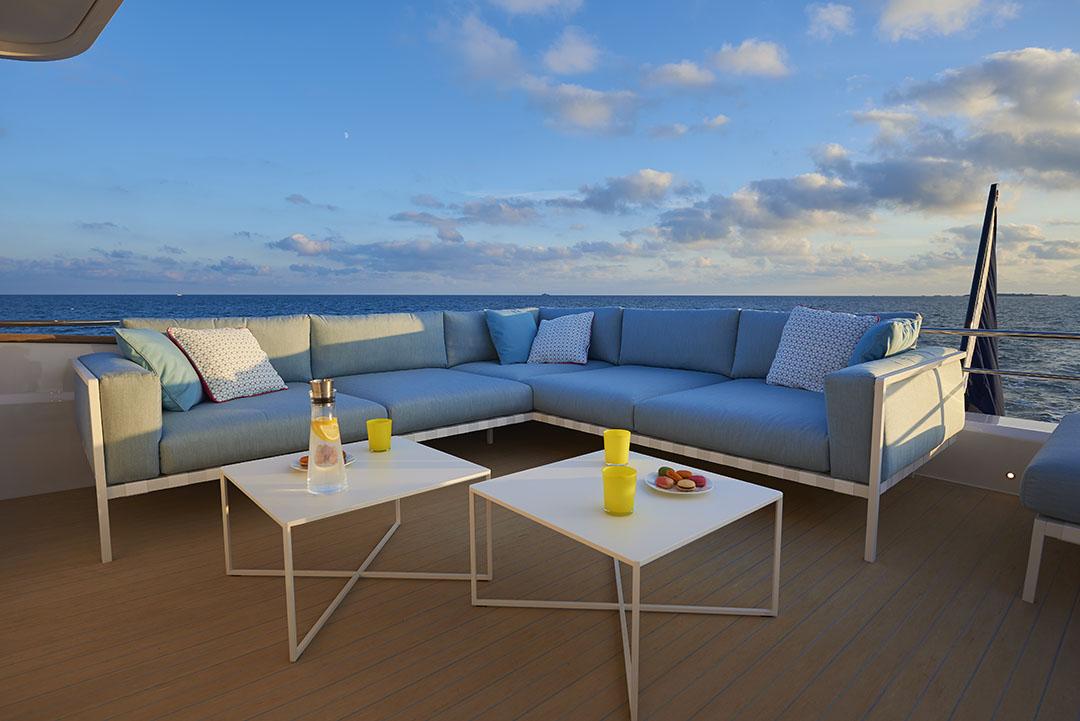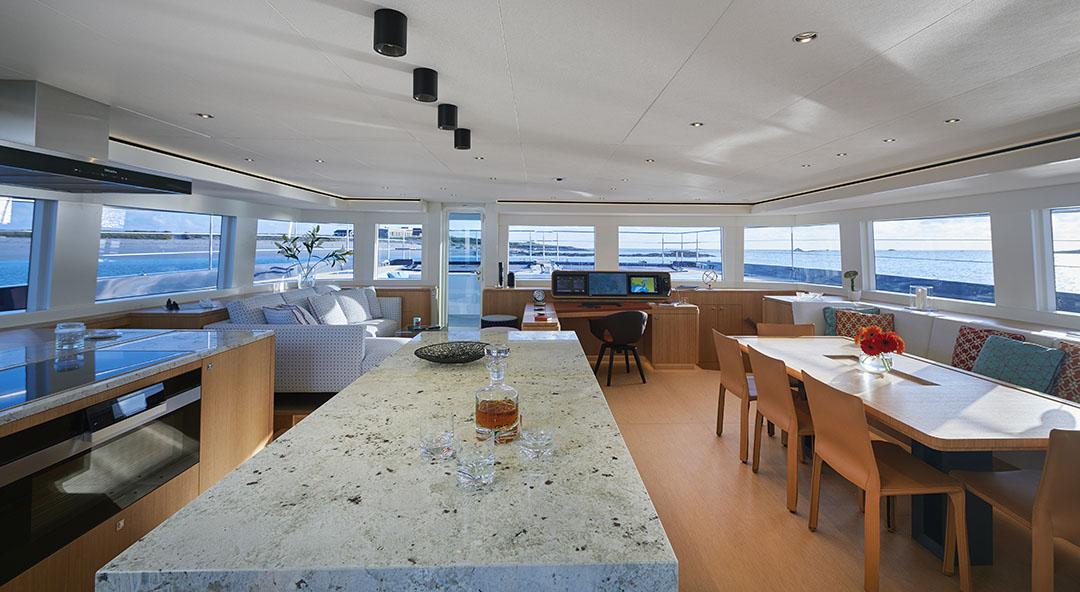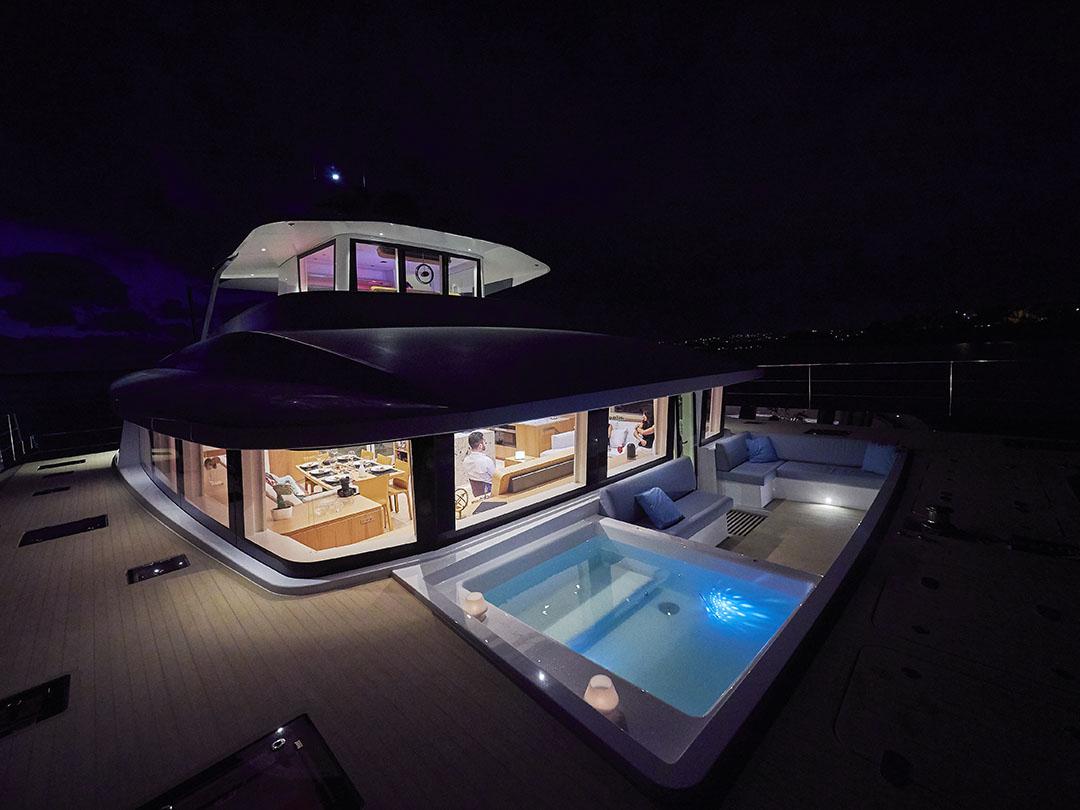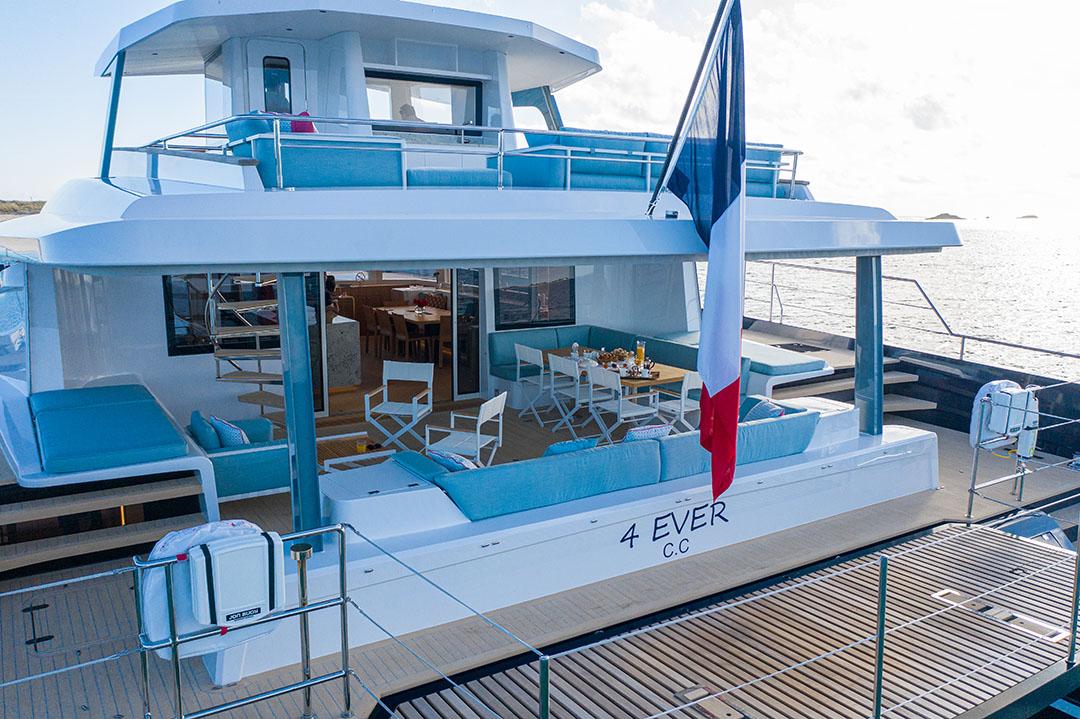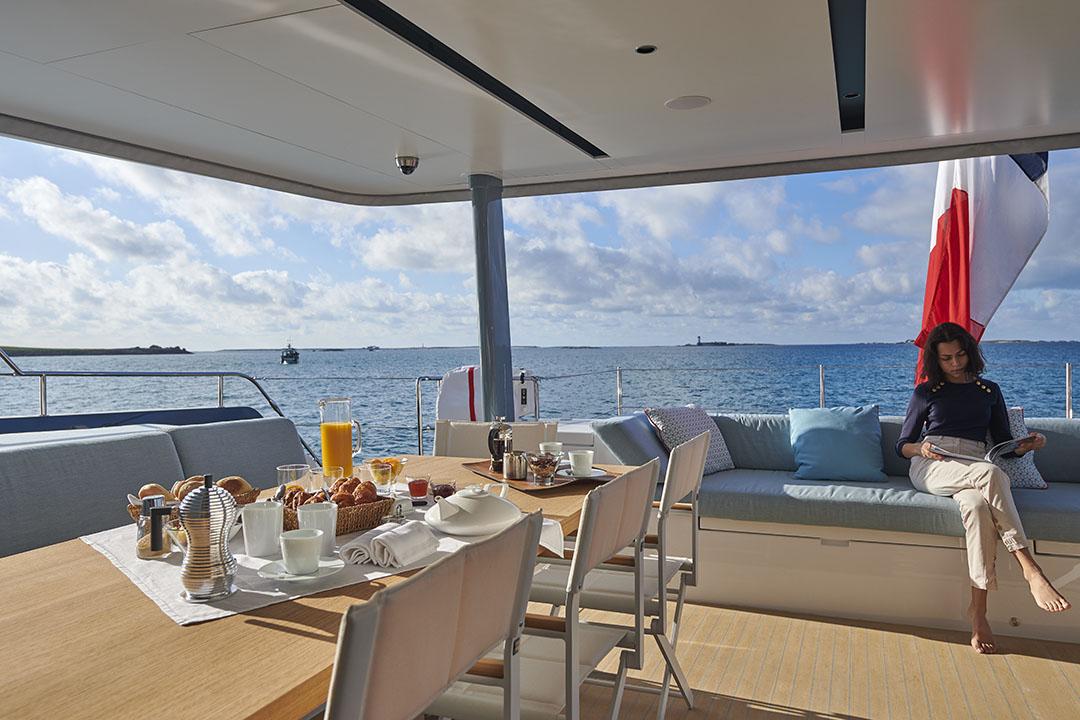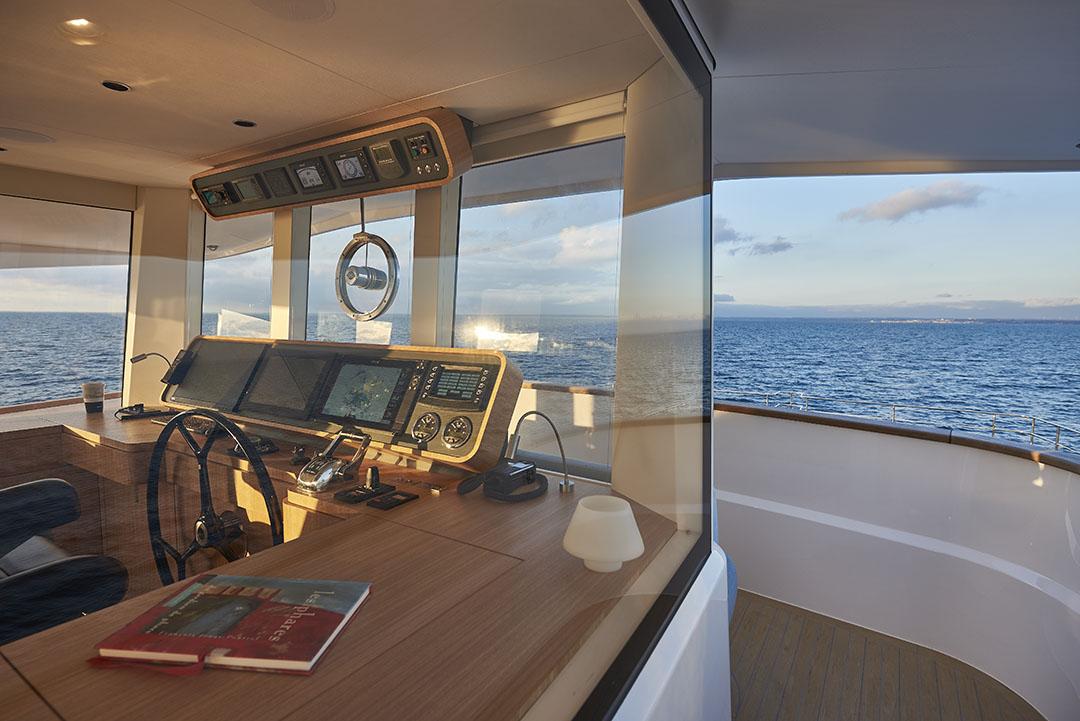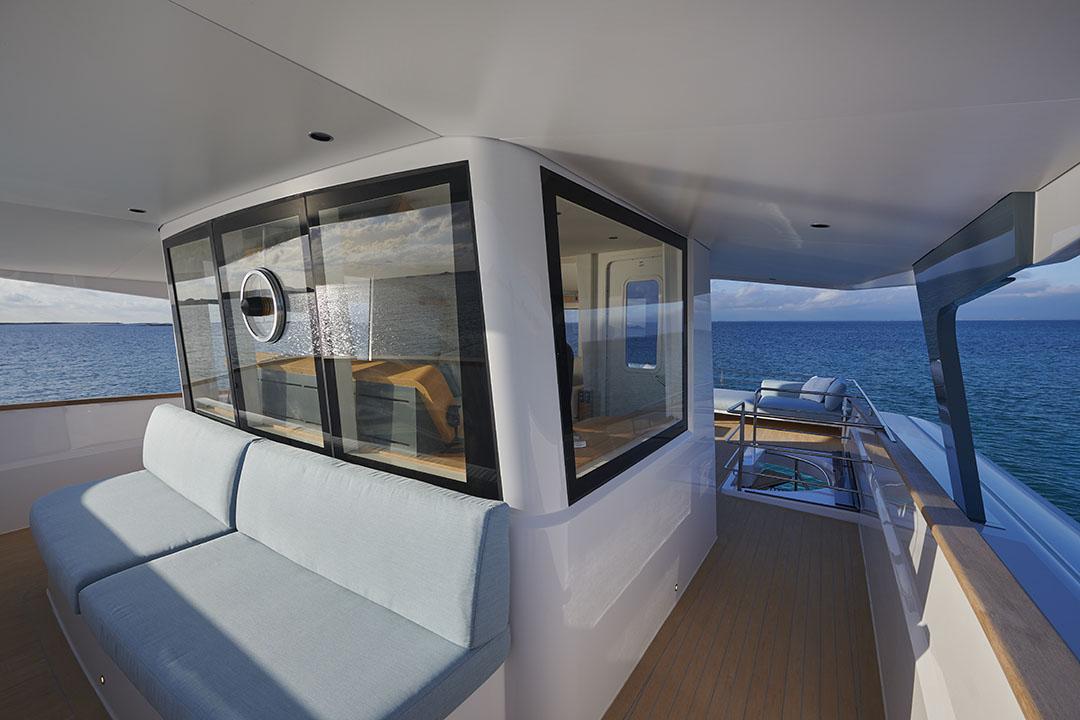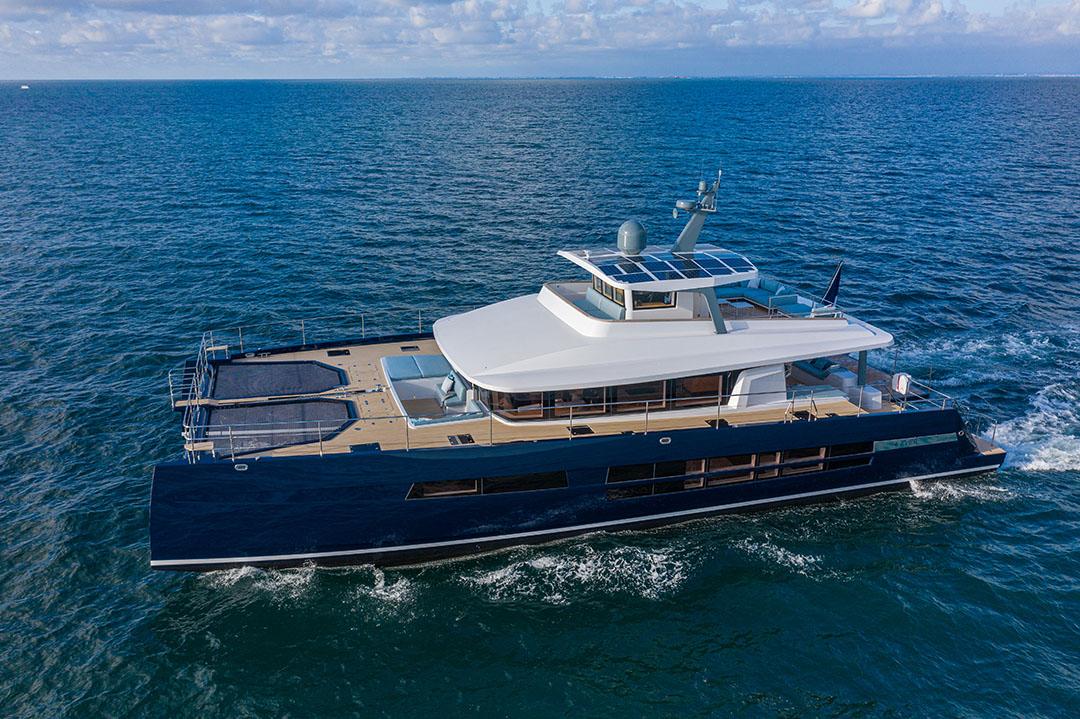Presentation
Yacht Class n°24 (march-april-may 2021)
JFA Yachts
First power catamaran of the Concarneau-based shipyard, this 78 foot is a success. This one off pleases with her refined and sporty personality. Her impressive size connects comfortable volumes to live in with the sea. In addition, her hydrodynamic efficiency is at the service of the long offshore cruises she was designed for.
Written by: Philippe Leblond – Photos: All rights reserved
Wide. This is what comes to mind when looking at the latest JFA Yachts. The Long Island 78 Power impresses with her impressive breadth. With a beam of over 11 metres, space is not counted, be it in the cockpit or on the side decks, as wide as boulevards. This width will also be a serious guarantee of stability during anchorages, even the less sheltered ones… For this first power catamaran, which reaffirms JFA’s presence in the multihull niche, the Concarneau-based shipyard had again called on Marc Lombard, for the naval architecture and exterior design, and Franck Darnet for the interior fittings and style. This collaboration has functioned remarkably, as their work complement each other harmoniously. Well, the two men had actually already worked together on the sailing yacht Long Island 85.
Forward, a lounge with a seawater pool
Ordering a JFA means entering the world of “custom made”, as each yacht leaving its warehouses is unique. This is because the aluminum construction of the hulls allows a great flexibility in the layout design, even if, for the Long Island 78 Power, the deck and superstructures are made of Epoxy. “Except for the painting, electricity and upholstery, everything is done at the yard,” JFA’s boss Frédéric Jaouen explained proudly. The elegant hulls come with an Awl Grip navy blue lacquer reflecting the sea with the precision of a high-resolution photo. The immaculate white of the superstructure contrasts beautifully, the Flexiteak (teak plywood) on the deck providing a warm link. Of course, we would have preferred natural teak, but the choice was made in favour of weight and maintenance savings. This concern for lightness is also obvious with the cabin partitions (sandwich) and ceilings (honeycomb), as well as with the wheelhouse carbon hard top. The movement from one outdoor space to another is both fluid, due to the XXL surfaces, and safe, thanks to the high rail surrounding the deck on its entire length. The two huge trampolines offer a vertical view of the water running between the hulls and, at anchor, they will delight the youngest passengers in search of gymnastic sensations. One downside, however, is the absence of one or two steps to go down (or up) to the deck saloon without trampling on the settees. This area, also accessible via the front door of the lounge, and with a seawater pool (with no Jacuzzi system), will certainly be one of the most popular places. Back to the stern, two flights of stairs lead to the swimming area, with its carbon ladder, and the hydraulic platform designed to accommodate the RIB.
Weight saving materials
After crossing the vast cockpit, where are located an outdoor dining area and the staircase leading to the flybridge and its closed wheelhouse and “altitude” lounge, we entered the large reception area (headroom: 2.06 m) that constitutes the nacelle connecting the two hulls. The well-equipped galley, with a long central kitchen island (granite), faces the interior dining area that can comfortably accommodate eight guests on Poltrona Frau leather chairs. Further forward, the lounge area is accompanied by the chart table with a repeater of the B&G navigation system located in the wheelhouse. Wherever one sits in this vast open space, large bay windows offer visual contact with the sea. On both port and starboard sides, stairs lead down to the cabins: four for passengers and one for the crew, as requested by the owner. The port hull houses the master cabin (headroom: 2.01 m), which features a dressing room, an office and a beautiful bathroom, and enjoys a huge bay window. “A terrace (Like on Lagoon, editor’s note)? It was discussed with the owner, Frédéric Jaouen revealed. But we preferred to offer a very large bay window overlooking the sea, especially since a terrace involve a risk of breakdown or a collision with a neighboring boat whose anchor would lose its hold… It cannot be closed anymore if deformed!” The portside guest cabin with its twin beds (200 x 85 cm) is separated from the master by a massive refrigeration unit (refrigerator and freezer). The VIP, which also has a small desk and dressing room, is located amidships in the starboard hull and takes advantage of the full beam to fit the bed transversely. Forward is another guest cabin, while the aft part is dedicated to the crew (two bunk beds) and features a small saloon, a closet and, like the passengers, its own bathroom.
A transatlantic range
For our sea outing, the Breton wind was quite discreet (2 to 3 Beaufort), causing a short chop of 80 cm that was far to test the two thin and high hulls of the Long Island 78. However, this is undoubtedly this type of sea where the thin hulls of multihulls are most appreciated (frontal area divided by two) as they cut the water without impacts. Even at a quicker pace, the Long Island seems to slide effortlessly and in appreciable silence: 73 decibels in the master at maximum rpm. This value should be reduced with the replacement of the current engine silent-blocs by softer ones… At 2 600 rpm, the GPS pleasantly surprised us by displaying 17.2 knots at the top speed of the two 500-hp Cummins diesels with V-Drive transmissions, while she has a contractual maximum speed of 15 knots… Cummins technicians even recorded 17.9 knots during their tests (see the datasheet)! More than this “speeding”, which though reflects the hydrodynamic efficiency of this 78-foot, we will retain the excellent performance at cruising speeds, as the pilot has a wide rpm range to adapt his speed to the sea conditions and the demands imposed by the schedule. Thus, she can either travel up to 5 328 miles without refueling – but at the speed of a sailboat (7 knots)-, take advantage of a still economic output at 2 000 rpm and sail at 12 knots, or use the whole cavalry and still have a significant range: 740 miles at nearly 18 knots. Back to port, one could assess the ease in maneuveres, thanks to the space between propulsive forces. Another reason for satisfaction was the excellent visibility in the wheelhouse and the fact that it was closed, which we really appreciated during this trial in chilly conditions. Note that if the helmsman enjoys a comfortable adjustable seat, the settee that keeps him company could do with a footrest…
Despite this rapid trial run, consisting of a return trip to the Glénan Archipelago, one can well imagine this athletic catamaran, with remarkable comfort and a sober but refined decoration, sailing the seas around the globe. It is actually her owner’s project. With his guests, he will be able to enjoy the very essence of this yacht designed for ocean cruising, as evidenced by her seafaring spirit and long range.
Technical sheet
